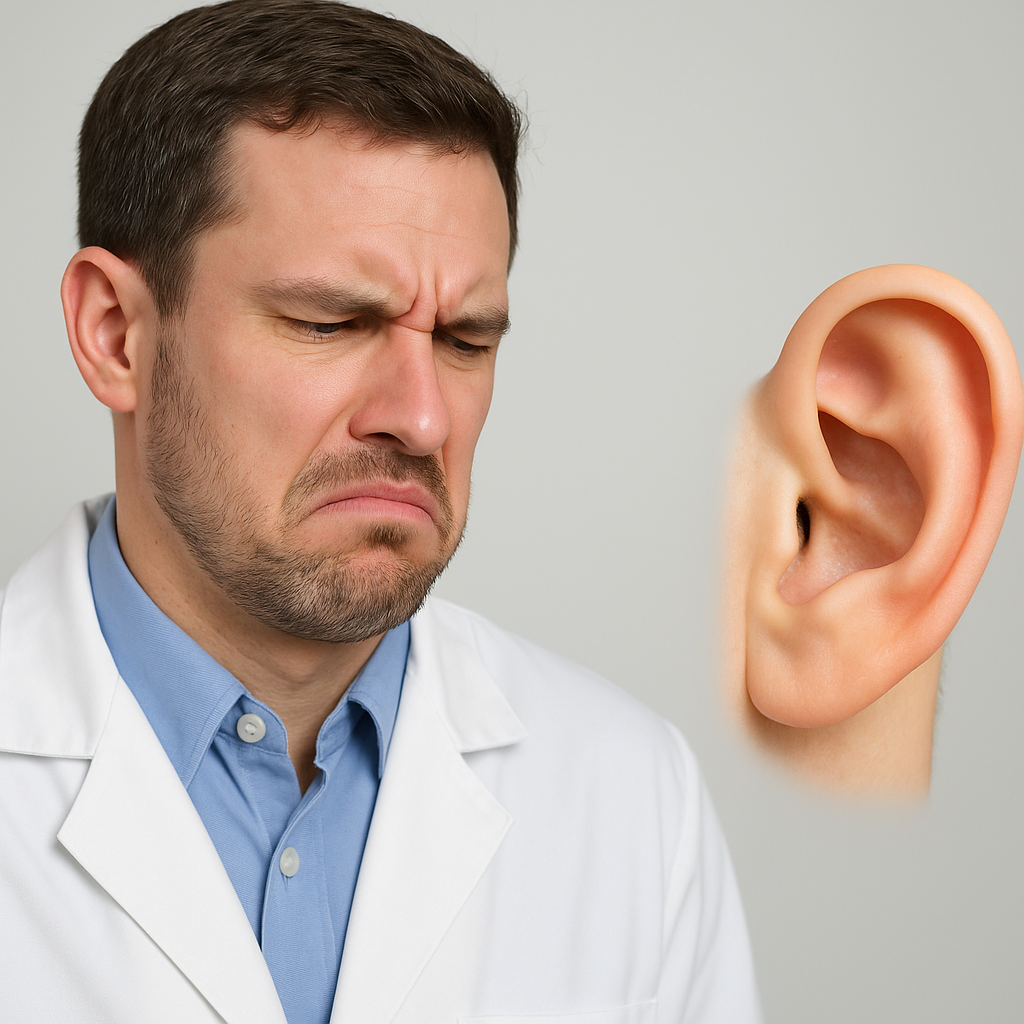Most earwax is odorless, but sometimes it develops a strong smell. This guide explains what causes smelly earwax, what earwax colors mean, and when it signals a medical issue.
Quick Take
- ✅ Mild odor in earwax is usually normal.
- ⚠️ Strong, foul, or unusual smells may signal infection or earwax buildup.
- 👂 Earwax color and texture also provide important health clues — see our earwax color guide.
- 🚫 Avoid cotton swabs — instead, learn safe ways to clean your ears.
The Science Behind Earwax
Earwax (cerumen) is produced by glands in the ear canal — a mixture of sweat, fatty acids, and dead skin cells. Its main jobs are to:
- Protect the ear canal from bacteria and fungi
- Lubricate and clean the ear naturally
- Trap dirt, dust, and small debris
Normally, earwax has little to no smell. Odor occurs when bacteria break down components of the wax or when wax has been trapped for too long.
Why Earwax Sometimes Smells Bad

Smelly earwax is often linked to an underlying condition. Common causes include:
- Earwax buildup – trapped wax collects debris and bacteria, leading to odor. Learn more in our earwax buildup guide.
- Infections – bacterial or fungal ear infections often cause foul-smelling discharge.
- Moisture – swimmers and hearing aid wearers are prone to stronger odors due to trapped humidity.
- Chronic conditions – eczema, chronic otitis externa, or middle ear infections may produce odor.
What Earwax Smells Can Mean
| Odor Type | Possible Cause | What To Do |
|---|---|---|
| Musty or sour | Bacterial infection or trapped moisture | See a provider if odor persists or pain develops |
| Foul or rotten | Chronic infection, severe wax buildup | Seek medical attention promptly |
| Sweet or fruity | Uncommon; possible metabolic issue (e.g., diabetes-related discharge) | Discuss with your doctor if persistent |
| Mild earthy smell | Normal wax, especially dark or old wax | No concern unless symptoms appear |
Earwax Color and Odor Connection
Color changes often go hand-in-hand with odor. For example:
- Yellow or orange: Fresh, normal wax — usually little to no smell.
- Dark brown or black: Older wax — stronger odor due to trapped debris.
- Green: Suggests infection, especially if odor is foul.
- White and flaky: Often odorless, common in those with dry-type earwax.
For a full breakdown of earwax shades, see our guide on earwax colors explained.
Genetics, Lifestyle, and Earwax Odor
Did you know genetics influence whether your earwax smells at all? People of East Asian descent often have dry earwax, which is less likely to carry odor. In contrast, those with wet earwax (more common worldwide) are more prone to odor since it has higher lipid content.
Other lifestyle factors can also contribute:
- Hearing aid users: trapped warmth and moisture encourage bacterial growth, causing odor.
- Swimmers: waterlogged ears can develop a musty smell.
- Overcleaning with cotton swabs: pushes wax deeper, leading to buildup and stronger odor.
Smelly Earwax in Kids vs. Adults
Children’s earwax can sometimes smell stronger, especially if:
- They wear hearing aids or earmolds
- They’ve had a recent cold or ear infection
- Water has been trapped after swimming or bathing
In adults, persistent odor is more often linked to chronic earwax buildup or underlying infections.
Safe Earwax Cleaning
Resist the urge to use cotton swabs — they push wax deeper. Safer methods include:
- Over-the-counter ear drops and rinses
- Warm water irrigation (gentle and safe when done correctly)
- Professional cleaning by an audiologist or ENT
For prevention, avoid overcleaning, keep ears dry, and schedule routine check-ups if you wear hearing aids or produce excess wax.
When to See a Doctor
Seek medical care if smelly earwax is accompanied by:
- Ear pain, swelling, or redness
- Discharge that is yellow, green, or bloody
- Sudden hearing loss or persistent blockage
- Recurring odor despite cleaning
An audiologist or ENT can safely evaluate your ear canal, remove the wax, and treat infections if present.

